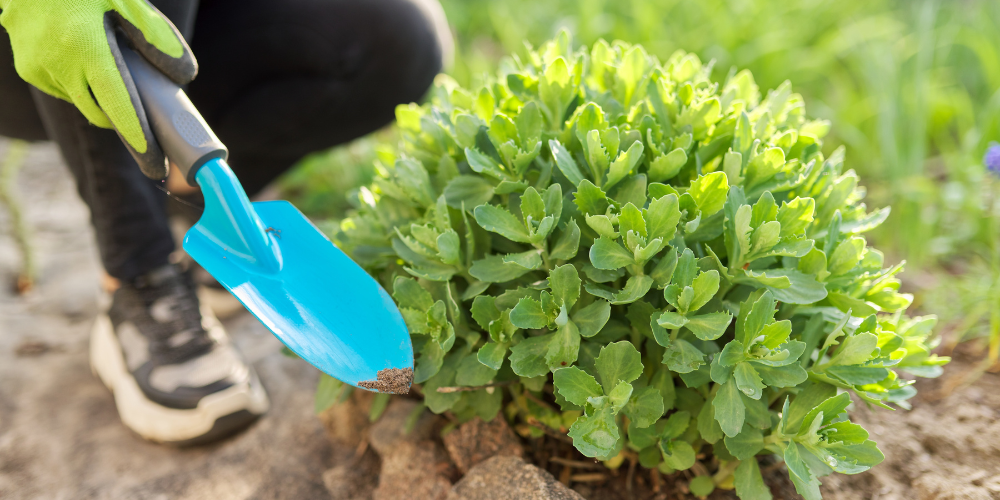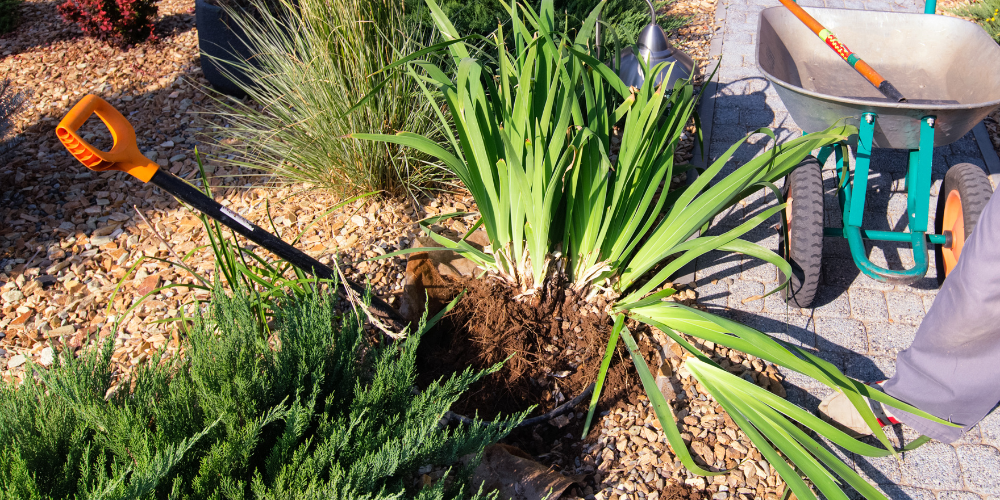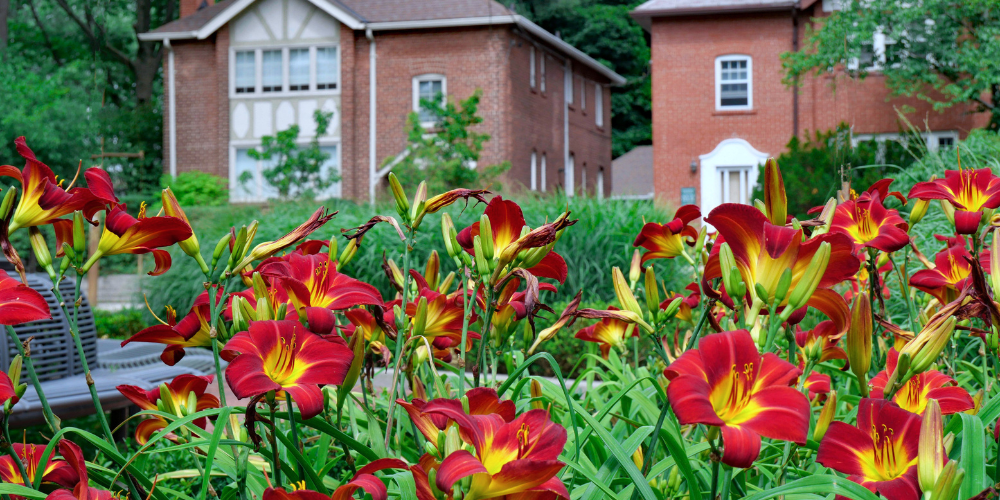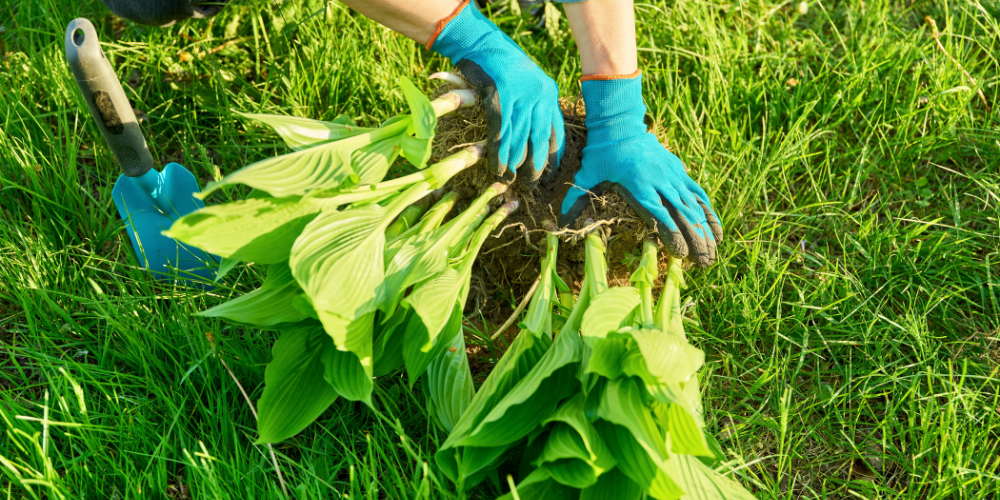September is a super month for getting those garden chores done, and one of our favorite ones to tackle every fall is dividing perennials. Not only is it a lot of fun, we don’t think there’s a better way to get free plants! Dividing perennials comes with a host of health benefits in the garden, too, so let’s dig in and find out the best way to grow your green family and spread the perennial love this season.

The Benefits of Dividing Perennials in Salt Lake City
As if getting FREE plants wasn’t good enough, here are all of the other reasons you need to separate those overgrown beauties this fall:
Promotes Plant Health and Vigor
We have a pretty unique climate here in Utah, with some hot summers and cold winters that can be challenging for some plants. Dividing perennials is an effective way to rejuvenate older plants, ensuring they remain healthy and vigorous. As perennials grow, their root systems can become crowded, leading to reduced flower production and overall vitality. Dividing them every few years allows you to refresh the soil around the plants and encourage new growth.
Adapt to Salt Lake City's Climate
Salt Lake City's diverse microclimates demand adaptable plants. Dividing perennials not only revitalizes them but also allows you to relocate or redistribute them according to their specific needs. For instance, you can move sun-loving plants to a sunnier spot, and shade-tolerant varieties to shadier areas, ensuring they thrive in the city's ever-changing weather.

Reduce Maintenance Costs
In a world where water conservation is paramount, maintaining a garden can be expensive! Dividing perennials helps reduce maintenance costs as healthy, well-spaced plants require less watering and fertilizer. By optimizing your garden's layout, you can achieve a more water-efficient and cost-effective landscape.
How to Divide Perennials in Salt Lake City
So, how do you go about getting those free plants, anyway? Here’s how:
1. Timing is Everything!
The ideal time to divide perennials in Salt Lake City is in early spring or early fall. With the mild weather, you’re not as likely to stress your plants out with a transplant. For this reason, try to avoid dividing perennials during the scorching summer months when the heat can be harsh on both the plants and you!
2. Prepare Your Tools
You’ll need some good tools for this job, including a sharp spade or garden fork, a pair of pruners or scissors, a bucket, and gardening gloves. Make sure your tools are clean and well-maintained to prevent the spread of diseases in the garden.

3. Dig it Up!
Start by digging around the base of the perennial plant, creating a trench that extends beyond the plant's drip line (the outermost edge of its foliage). Carefully lift the plant out of the ground, taking care not to damage the root ball.
4. Divide and Conquer
Use your clean spade or garden fork to divide the plant into smaller sections. Depending on the plant's size and growth pattern, you may be able to divide it into two or more sections. Ensure that each division has healthy roots and shoots.
5. Replant and Care
Replant your fresh divisions in their new spots, making sure to amend the soil with organic matter if necessary. Water thoroughly to help the roots establish themselves in their new homes, and continue to care for the divided plants as you would for any newly-planted perennials.
Sharing Your Perennials
If you find yourself with more divided plants than you can squeeze into your garden, consider sharing them with others. Here's why it's a fantastic idea!
Strengthens Community Bonds:
Sharing your divided perennials with neighbors, friends, or local gardening clubs fosters a sense of belonging and community. It's a beautiful way to connect with others who share your passion for gardening.

Beautify Your Neighborhood:
By distributing divided perennials throughout your neighborhood, you contribute to the overall improvement of your community. Your generosity might also inspire others to invest in their own gardens, creating a more appealing and welcoming environment and increasing food sources for the local pollinators.
Dividing perennials in Salt Lake City is not just a gardening practice; it's a way to enhance your garden's health, adapt to the local climate, and reduce maintenance costs. As you dig, divide, and share your perennials, you'll not only witness the growth of your garden, but also the growth of a stronger, more vibrant community.
So, grab your spade, start dividing, and watch your garden and friendships flourish, but remember to stop by Millcreek Gardens to top up on those important planting supplies today!


